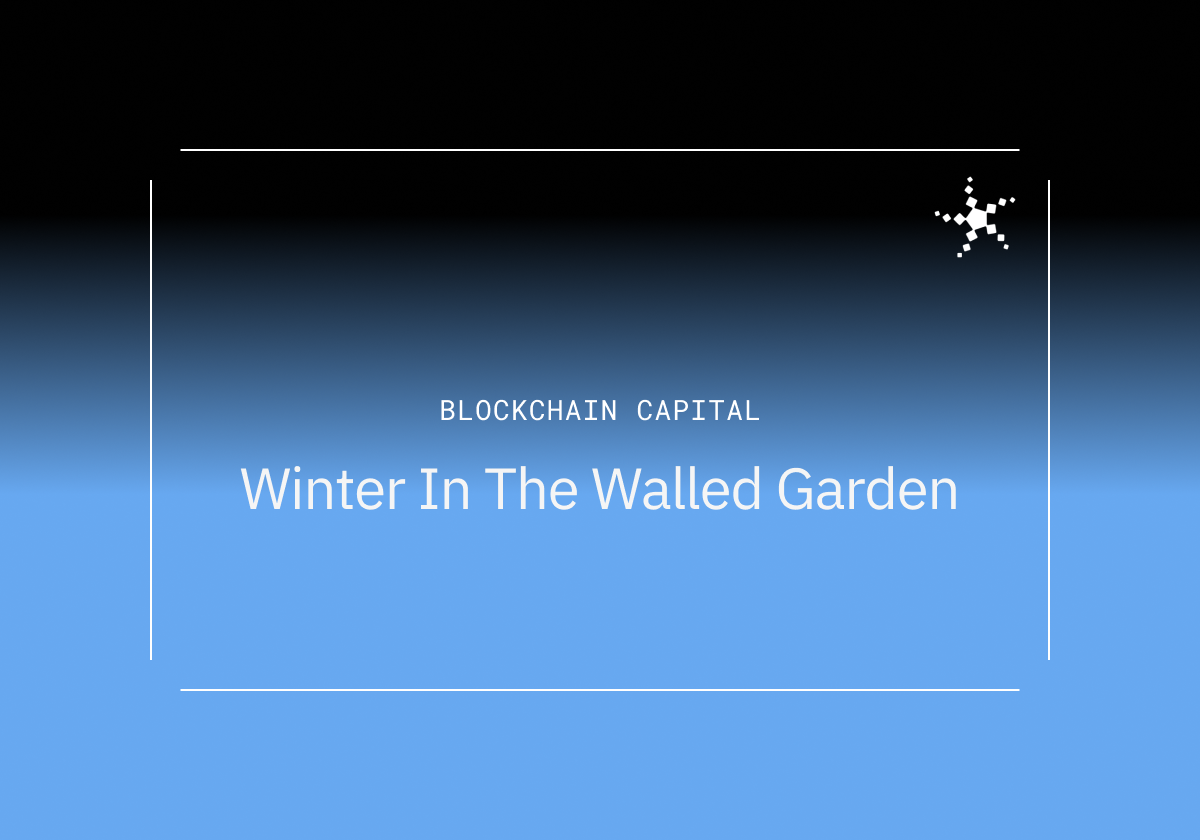
Entering the DeFi Token Era
Background
Token models have matured significantly since 2017. After the ICO craze of 2017/2018 spawned a generation of utility tokens for medium of exchange use cases and obscure means of value capture, the bear market of 2018/2019 killed off most of the speculative value from these tokens and challenged their raison d’être. Beginning in 2018, we saw two trends happening in parallel: 1) DeFi protocols started offering open, smart contract-based financial services; and 2) tokens that had well-defined, more traditional means of value capture saw their price climb as the activity on their protocols grew.MakerDAO catalyzed both of these trends by offering useful decentralized financial services in the form of an automated lending desk and a permissionless stablecoin, as well as a governance token (MKR) that is burnt in proportion to the earnings of its lending desk. Known as the buy-and-burn model, MKR’s token model functions like a stock buyback, suggesting that investors can quantify the value of MKR based on assumptions about the interest rates and loans outstanding. While there are some notable differences — including that Maker does not pay out dividends and returns capital to token holders exclusively through buybacks — this model much more closely approximates that of equities. Over the last few years, MKR has been consistently valued in the hundreds of millions and has enabled the Maker Foundation to finance, develop and grow the Maker ecosystem.A number of prominent DeFi protocols have similar models, including Synthetix (which pays dividends to SNX holders based on trading fees from its synthetic asset exchange), Kyber Network (which burns a portion of KNC in proportion to trading fees from its token exchange), and a growing number of others.At the same time, DeFi protocols have seen the economic activity on their networks grow substantially in recent months, with the value of deposits on DeFi protocols growing from $660M on January 1 to $2.1B as of July 8. Notably, a lot of this growth has been concentrated in recent weeks, as deposits have grown from $980M on June 15 to $2.1B just 3 weeks later. This recent leg of growth has been driven by Compound and Balancer, both of whom followed in Synthetix’s footsteps and initiated “liquidity mining” programs, whereby token rewards are issued to users that supply liquidity.Over the last year, a group of the main DeFi tokens — characterized by clear paths to value accrual and growing on-chain economic activity — has dramatically outperformed utility tokens as well as Bitcoin and Ether. This suggests that well-designed tokens are starting to trade on fundamentals.In addition, prices have recently continued to climb higher on the back of new liquidity mining programs — a sign that once you have a token that has a clear opportunity for value-capture, you can design incentive schemes that leverage that token to bootstrap a 2-sided marketplace business. New and existing DeFi protocols have taken note and are moving towards similar incentive mechanisms:

While these token models are still experimental, and liquidity mining may appear on the surface to be an ephemeral growth hack, these developments are early evidence of two extremely important shifts in our understanding of crypto networks, namely:
(1) Developing a monetary premium is not the only defensible value accrual strategy for crypto assets.
(2) One of the main hypotheses driving the 2017 ICO mania — that tokens could be used effectively to bootstrap new networks — has been validated.
To better understand these shifts, I analyze three of the most prominent examples in detail below and lastly discuss what I believe to be their likely impact.
Compound
Compound is a money markets protocol that offers the ability to deposit / lend out tokens and borrow against the value of those deposits. Until recently, the protocol was centrally governed and managed by Compound Labs, who held the power to decide which assets the protocol would support, the interest rate models for the assets, a number of other risk parameters, and the ability to upgrade Compound’s smart contracts.
Since its initial launch in September 2018, Compound has become a leader in the DeFi space, attracting nearly $100M by June 14, 2020. In February 2020, the Compound team took the first step toward decentralization by introducing a token-based governance system that would replace the Compound protocol’s administrator with community governance without relying on or requiring the Compound team. They started with an initial sandbox period, where a portion of COMP governance tokens were distributed amongst shareholders, who were then able to delegate voting weight to themselves or the public. The majority of COMP is escrowed and won’t participate in governance, and as a failsafe, the team maintained the ability to suspend the governance system during the sandbox period.
According to the new token model, anyone with 1% of COMP (100K) delegated to their address can propose a governance action, which can be simple or complex, such as adding a new asset, changing an asset’s collateral factor, changing a market’s interest rate model, or changing any other parameter or variable of the protocol that the previous administrator could modify. These proposals are in the form of executable code (e.g. not suggestions for the team to implement, but direct implementations), and are subject to a 3 day voting period, where any address with voting power can vote for or against the proposal. If a majority (and at least 400K votes) supports the proposal, it is queued in a Timelock and can be implemented after 2 days.
On June 1, the Compound Labs team abdicated their control over Governance, giving COMP holders complete control over the protocol. Compound Labs adopted a set of rules and guidelines limiting their interaction with the protocol, committing to not serve a managerial role in governance, participate directly in governance (vote or delegate), privately coordinate votes, or conduct or pay for security audits of third-party proposals.
On June 15, the Compound community voted to start distributing COMP via daily rewards for all users and applications built on top of Compound. The distribution looks as follows:

COMP has a total supply of 10M. 4.3M COMP (42% of total) were set aside for daily issuance over the next 4 years. Every block transfers 0.5 COMP to users (~2,880 per day), allocated to each market proportional to the interest being accrued. In other words, the markets earning the highest interest on Compound initially received the most COMP. Within each market, 50% of the distribution is earned by suppliers and 50% by borrowers, meaning users earn COMP in proportion to their balance in Compound. Once an address has earned 0.001 COMP, any Compound transaction (e.g. supplying an asset, or transferring a cToken) will automatically transfer COMP to their wallet.The daily COMP distribution immediately incentivized both borrowing and lending, and has resulted in a spike of deposits. In the 3 weeks since it went live, Compound grew its deposit base to over $600M:

This was not without unintended consequences — users quickly began gaming the distribution scheme by pushing up the utilization rate of risky assets (BAT and ZRX) to drive interest rates up to earn more COMP rewards. This created perverse incentives and rewarded users for supplying/borrowing assets that have no natural lend/borrow demand, and the community subsequently changed the reward scheme on June 30. The upgrade removed the interest rate variable from the reward algorithm and started allocating COMP in proportion to borrow amount alone, with the allocation then being split equally between suppliers and borrowers. This removed the incentive to target risky assets and resulted in users shifting to safer assets like USDT and DAI, bringing the split between markets closer to a “pre-COMP world”.A COMP market on Uniswap was created soon after distribution began, with COMP starting trading at ~$30 (implying daily rewards of $43K per day based on the reported valuation of Compound’s last private financing) and quickly being bid up (due to low liquidity and high interest) to over $200 — giving COMP a fully diluted market cap of $2B and bringing the value of the 2,880 COMP rewarded per day above $500K — which is significantly higher than the daily interest earned on the platform.This led to users thinking of supplying assets to Compound as a trade, where they would purchase assets and supply them to Compound, borrow more assets against the deposits and supply those again to Compound. In exchange for taking on the risk of the asset’s price moving (which could also cause liquidations), the trader earns COMP continuously which can be sold on Uniswap and is now also listed on other exchanges including Coinbase Pro and Binance.While people may ascribe value to governance rights, the perceived value of COMP comes primarily from its control over reserves which accrue some fraction of the interest paid in each market, generally a value between 5% and 20% that is determined via governance vote. The original purpose of the reserve was to act as a liquidity cushion and safety mechanism for the protocol, but COMP token holders can technically adjust the reserve ratio and start paying out dividends from the reserve to themselves as profit if they choose.The chart below shows COMP’s market price since shortly after it began trading:

Compound’s distribution mechanism shows the power of incentives to bootstrap a 2-sided marketplace. As a leader in DeFi, COMP is seen as an asset that has the potential to capture a lot of value in the future. By subsidizing deposits (and in a lot of cases making it profitable to add deposits), the COMP token acts like BTC for miners, except in the place of mining hardware, COMP miners supply token deposits and use the protocol. This kicks off a positive feedback loop where more deposits imply more value captured in the community-controlled reserve and higher growth, which makes COMP more valuable.
Of course, if COMP trades down, some of these deposits will leave, but there is likely a degree of reflexivity here, where the increased traction drives new integrations and brings in new users that stay for the core services — further making apt the analogy to Bitcoin mining.
Perhaps more importantly, Compound’s process demonstrates a playbook for DeFi projects that allows them to capture value in a decentralized manner. While the Compound community hasn’t voted to add dividends or burns yet, the option of doing so via the governance process mitigates regulatory risk around COMP (in theory), promotes platform neutrality and community ownership, and gives the protocol a credible foundation to decentralize from.
Balancer
Balancer is a generalized automated market making protocol that lets users supply liquidity and facilitates token swaps across its pools. Balancer pools can have up to 8 assets in them of customizable weights, can be public or private, and fees are customizable. This gives more options than Uniswap pools, which support 2 assets and have a constant 25 bp fee. Because of the increased flexibility of the Balancer protocol, the team claims to support a broader range of liquidity providers and use cases than existing AMMs (Bancor, Uniswap).
Balancer V1 launched in late February 2020, and like Compound, the protocol was initially without a token. It began to see an uptick in traction in late April, getting to around $20M in deposits. On May 15, Balancer Labs proposed adding community-owned governance tokens. The proposal was well received, and on May 29, Balancer Labs announced liquidity mining would commence on June 1, with users earning a daily reward of Balancer Protocol Governance Tokens (BAL).
Every week 145K BAL (approximately 7.5M per year) are rewarded proportionally to the amount of liquidity each address contributed relative to the total liquidity on Balancer. To calculate the rewards users get, each week Balancer looks at the USD price of tokens in all its pools from CoinGecko and calculates the proportional USD value that each pool has. It then adjusts the USD value by a feeFactor, which gives pools with low fees a higher weight in the distribution mechanism:

This incentivizes lower fees, which ultimately drives more trading volume to Balancer. Finally, the BAL rewards are paid out to each address according to the feeFactor-adjusted amount of liquidity supplied by each address, divided by the total amount of liquidity in the protocol. Only pools with at least 2 tokens with prices on CoinGecko are eligible for BAL rewards.While a decentralized governance has yet to be formalized, Balancer intends to remove dependence on the team similarly to Compound, and will allow BAL voting on everything from implementing new functionalities, to deploying the protocol on additional blockchains, to using layer 2 solutions for scaling, introducing a protocol level fee, and more.The total supply of BAL is 100M, with 25M initially allocated to insiders and 75M intended to be mostly distributed to liquidity providers in the coming years:

With governance approval, tokens may also be distributed to strategic partners to foster development of the protocol and its ecosystem.The BAL price from the private financing was $0.60, implying rewards would initially total $87K per week. However, it was quickly added to Balancer and other exchanges like FTX and Poloniex and is currently trading at around $11, pushing weekly rewards to an implied $1.6M:

The value of BAL tokens stems from the potential for BAL holders to vote in a fee and pay it out via dividends or token burns down the line. The team has guided that the fee will likely be a 5 bp fee upon withdrawals of funds from Balancer, but this is subject to change and remains an open question. Since liquidity mining began, the BAL rewards have driven deposits to over $150M:

Before liquidity mining, Balancer was in the shadow of Uniswap, who had more than double the deposits across Uniswap V1 and V2. However, Balancer has now quickly overtaken Uniswap in deposits, demonstrating the efficacy of liquidity mining — even in the absence of governance features. This shows that the current features of a token are not critical to the market and crypto investors/users are happy to earn and speculate on tokens as long as there’s a reasonable expectation that value accrual and governance features will be added down the line.
Synthetix
No discussion of innovative DeFi token models and liquidity mining would be complete without mention of Synthetix, the DeFi protocol that pioneered the mechanism and proved it out before Balancer and Compound adopted their own versions of it.
Synthetix is a decentralized synthetic asset issuance protocol that supports fiat currencies, cryptocurrencies (long and short) and commodities. The synthetic assets (called synths) are debt positions collateralized by the SNX token, which users purchase and stake by locking it up and minting synths against it. This is very similar to how MakerDAO allows people to mint synthetic dollars (DAI) against ETH collateral, except Synthetix uses SNX as the collateral and refers to depositing SNX as staking. The pooled collateral model enables users to perform conversions between synths directly with the smart contract, avoiding the need for counterparties and allowing liquidity even with small floats on a given synth — without slippage.
If synths de-peg from their target price, the protocol will still value them at par and stakers can profit by buying back cheap synths and burning them to reduce their debt at a discount. There are also incentives for SNX holders to create liquidity for synths on Uniswap, creating another venue to arbitrage against and further strengthening the pegs.
As an example, you can purchase SNX, stake it as collateral on Synthetix, mint synthetic USD (called sUSD) against the collateral, and then trade that sUSD for any other synthetic asset that is in circulation. The trade uses oracle prices to determine the swap rate, and since both synthetic assets are backed by one collateral pool, the swap can be made directly on the protocol without needing external exchanges.
On the token model front, SNX holders are incentivized to stake and mint synths as they are paid a pro-rata portion of the fees generated through activity on the synth exchange, as well as liquidity mining rewards in new SNX issuance. Since SNX is a volatile form of collateral, synths currently have a 750% collateralization ratio. However, ETH is being trialled as an alternate form of collateral with a 150% collateralization ratio.
In addition to trading fees, which generally are between 10 and 100 bps of volume, SNX holders that stake SNX and mint synths are rewarded in new SNX issuance. From March 2019 to August 2023, the total SNX supply will increase from 100M to 260M with a weekly decay rate of 1.25% (from December 2019). From September 2023, there will be an annual 2.5% terminal inflation in perpetuity. These SNX tokens are distributed to SNX stakers weekly on a pro-rata basis provided their collateralization ratio doesn’t fall below the target threshold. If a staker’s C ratio falls below the target (currently 750%), they will be unable to claim fees until they restore their ratio.
Further, Synthetix incentivizes liquidity for its synths on other exchanges. Each week, a portion of the SNX is currently distributed to people providing sUSD (synthetic USD) liquidity on Curve. Those LPs earn both Curve trading fees and SNX liquidity mining rewards, highlighting the symbiotic nature of composable protocols. This dynamic has been referred to as ‘aquaponic farming’, whereby users receive rewards from multiple protocols that are used in conjunction to offer liquidity and other financial services.
Synthetix is currently governed by the Synthetix foundation and no formal decentralized governance system has been put in place. However, the foundation has encouraged community-driven improvement protocols, frequently runs polls on Discord to measure sentiment on new proposals, and has guided that they will eventually move towards decentralized governance.
Since December 2018, Synthetix LPs have generated $8.7M in fees on $1.6B of total trading volume. The current synth supply is $46.8M which is collateralized with $490M of SNX on a fully diluted market cap basis. SNX trades on Coinone, Poloniex, Uniswap and a number of other small exchanges, with limited volume (generally <$10M daily). While the rewards have been in place since December 2018, they drove a wave of interest in late 2019 and again recently with increased interest in DeFi.

It’s a bit more difficult to see the value of the issuance scheme on synth minting, as the above chart effectively shows the collateral value in SNX (on a circulating supply basis) — basically the SNX market cap. However, the protocol mechanics spell out the impact fairly clearly: as more synths are minted against SNX and traded on the exchange, fees grow, which increases the value of SNX, allowing more synths to be minted. This dynamic has driven a positive feedback loop that has resulted in the growth of SNX and the outstanding market cap of all synths, and has inspired a generation of newer DeFi protocols to add similar token mechanics.
Impact & Outlook
The above examples serve as case studies of DeFi protocols using innovative token models to 1) offer a path to value accrual from platform fees, and 2) use native tokens and liquidity mining mechanisms to bootstrap activity on their protocols. Due to their success, other protocols are beginning to move in the same direction. In addition to these three, Ren Protocol and Ampleforth have started similar liquidity mining programs and Kyber Network, mStable, Curve, and bZx have publicly announced their intentions to do the same.
These examples, as well as the additional context we have on the coming wave of DeFi tokens, make it clear that in order to be competitive in DeFi, native tokens will be an important tool for driving adoption early on, and for engaging a community of users and strategic partners. To see why, look at Compound’s top 10 addresses by COMP voting weight:

Gauntlet, Alameda Research, and Dharma are all among the top 10 holders of circulating COMP. Gauntlet, an economic simulation platform, is considered the gold standard of testing cryptoeconomic system performance, and their participation in governance is a sign of endorsement and alignment with Compound. Dharma, now one of the top smart contract wallets, pivoted from competing with Compound on the protocol level to becoming a provider of Compound-powered financial services — a move that would likely not have happened without alignment in the form of token incentives. Alameda Research is another clear strategic partner that has already contributed to the liquidity of COMP by listing it on its FTX exchange. These strategic partners add clear value to the Compound ecosystem, and without a token, it would have been much more difficult to align them with Compound.In addition to using tokens to drive alignment with partners and users, they can be used for aquaponic farming with other DeFi systems to compound user incentives across multiple liquidity mining programs. For example, imagine a protocol that rewards its users for staking the protocol’s native token. The protocol can let users deposit tokens in a staking contract, rendering the tokens unusable for anything else — or they can consider anyone who adds token liquidity on an exchange protocol like Balancer to be a staker. This would allow the staked tokens from the lending protocol to also provide liquidity on Balancer, and thus provides increased market depth for the token, as well as allowing stakers to earn fees from the Balancer pool and BAL liquidity mining rewards — boosting their income from staking beyond the core staking rewards.When baked into the token mining process, this type of cross-protocol integration allows protocols to tightly intertwine their user-bases and allow each other to add additional utility for their users. There are clear synergies realized by users, who earn more rewards, and by the protocol, which can offer more functionality without having to build out a new protocol from scratch. It is the natural path of composable, complementary systems to share rewards across their mutual communities, and it means that there will be significant community overlap and alignment between certain complementary DeFi systems — a dynamic that is incompatible with the tribalistic and competitive nature of base layer cryptocurrencies and fork-chains. This is a superpower for DeFi protocols.To really drive this home, there is no clearer example of mining synergies than what is possible with Nexus Mutual, the leading provider of insurance for the DeFi ecosystem. Other protocols can allocate part of their token issuance to users who stake on their address in Nexus Mutual — an activity that unlocks insurance cover and lowers the price (e.g. the user takes on the risk of that protocol). In this example, the outside protocol is using its own token to incentivize users to expand insurance offerings for the protocol, adding additional avenues for financial protection to an ecosystem where security and risk management may be the most desirable qualities and branding that a protocol can have.While it is a superpower, cross-protocol mining also presents dangers that we don’t yet understand. Token incentive schemes can drive unexpected behavior, as we saw when Compound users piled into the riskiest assets to maximize their COMP earnings, and by combining mining schemes, these unintended consequences become harder to understand and anticipate. One can imagine a situation where an outside protocol creates incentives that — without any action of its own — can drive dangerous behavior in another protocol and ultimately result in cascading liquidations and user losses.For better or worse, these experiments will be run in the wild and with real money at stake. There will be hacks, bugs, and losses, and an issue with one protocol can quickly cascade into issues with other protocols. However, the process of battle testing with real money will ultimately result in hardened systems with well understood risks.Finally, these new DeFi tokens serve a purpose beyond value capture and stakeholder alignment. Namely, they are becoming a big part of the product of DeFi protocols. COMP yield farming brought in $500M in new deposits, growing the DeFi pie by over 30% in several weeks and hinting at how DeFi will cross the user adoption chasm into the mainstream: DeFi tokens capture value like equities but dodge regulation via decentralization, have 24/7 auditable financials, and provide sustainable and censorship-resistant platforms for financial services that will serve themselves initially. The first place a new token trades will be a permissionless AMM like Uniswap or Balancer. Volume on a permissionless AMM may very well become a precursor to a Coinbase or Binance listing. Similarly, credit markets for the token will first form on decentralized lending desks like Compound and Aave.This is a tech-interested trader or financial analyst’s dream: a new asset class with real-time balance sheets and income statements, and the potential to disrupt financial systems all over the world by offering better access, more transparency, shared value creation, and unbeatable margins. And in order to get exposure early, you need to become a user of the protocols. If the new users and capital brought in by COMP is any indication, the coming wave of DeFi tokens is going to grow the market by orders of magnitude.Thanks to the Blockchain Capital research team (and Spencer Bogart and Andrew Yang in particular) for helpful feedback and conversations on these topics.
Disclosures: Blockchain Capital is an investor in several of the protocols mentioned above. The views expressed in each blog post may be the personal views of each author and do not necessarily reflect the views of Blockchain Capital and its affiliates. Neither Blockchain Capital nor the author guarantees the accuracy, adequacy or completeness of information provided in each blog post. No representation or warranty, express or implied, is made or given by or on behalf of Blockchain Capital, the author or any other person as to the accuracy and completeness or fairness of the information contained in any blog post and no responsibility or liability is accepted for any such information. Nothing contained in each blog post constitutes investment, regulatory, legal, compliance or tax or other advice nor is it to be relied on in making an investment decision. Blog posts should not be viewed as current or past recommendations or solicitations of an offer to buy or sell any securities or to adopt any investment strategy. The blog posts may contain projections or other forward-looking statements, which are based on beliefs, assumptions and expectations that may change as a result of many possible events or factors. If a change occurs, actual results may vary materially from those expressed in the forward-looking statements. All forward-looking statements speak only as of the date such statements are made, and neither Blockchain Capital nor each author assumes any duty to update such statements except as required by law. To the extent that any documents, presentations or other materials produced, published or otherwise distributed by Blockchain Capital are referenced in any blog post, such materials should be read with careful attention to any disclaimers provided therein.
No Results Found.








.jpg)



.png)
.png)
